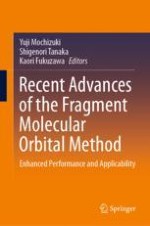2021 | OriginalPaper | Chapter
Group Molecular Orbital Method and Python-Based Programming Approach
Author : Tomomi Shimazaki
Published in: Recent Advances of the Fragment Molecular Orbital Method
Publisher: Springer Singapore
Activate our intelligent search to find suitable subject content or patents.
Select sections of text to find matching patents with Artificial Intelligence. powered by
Select sections of text to find additional relevant content using AI-assisted search. powered by
